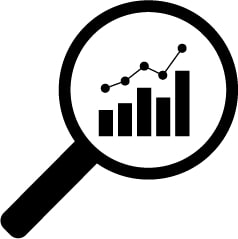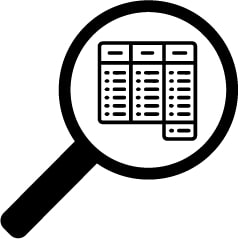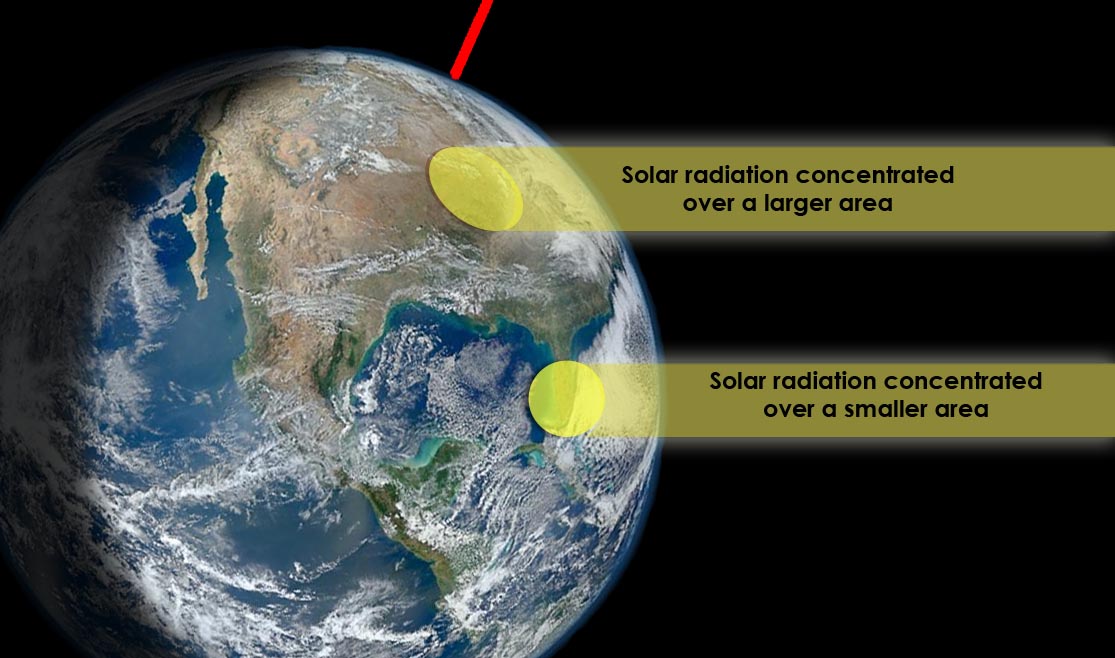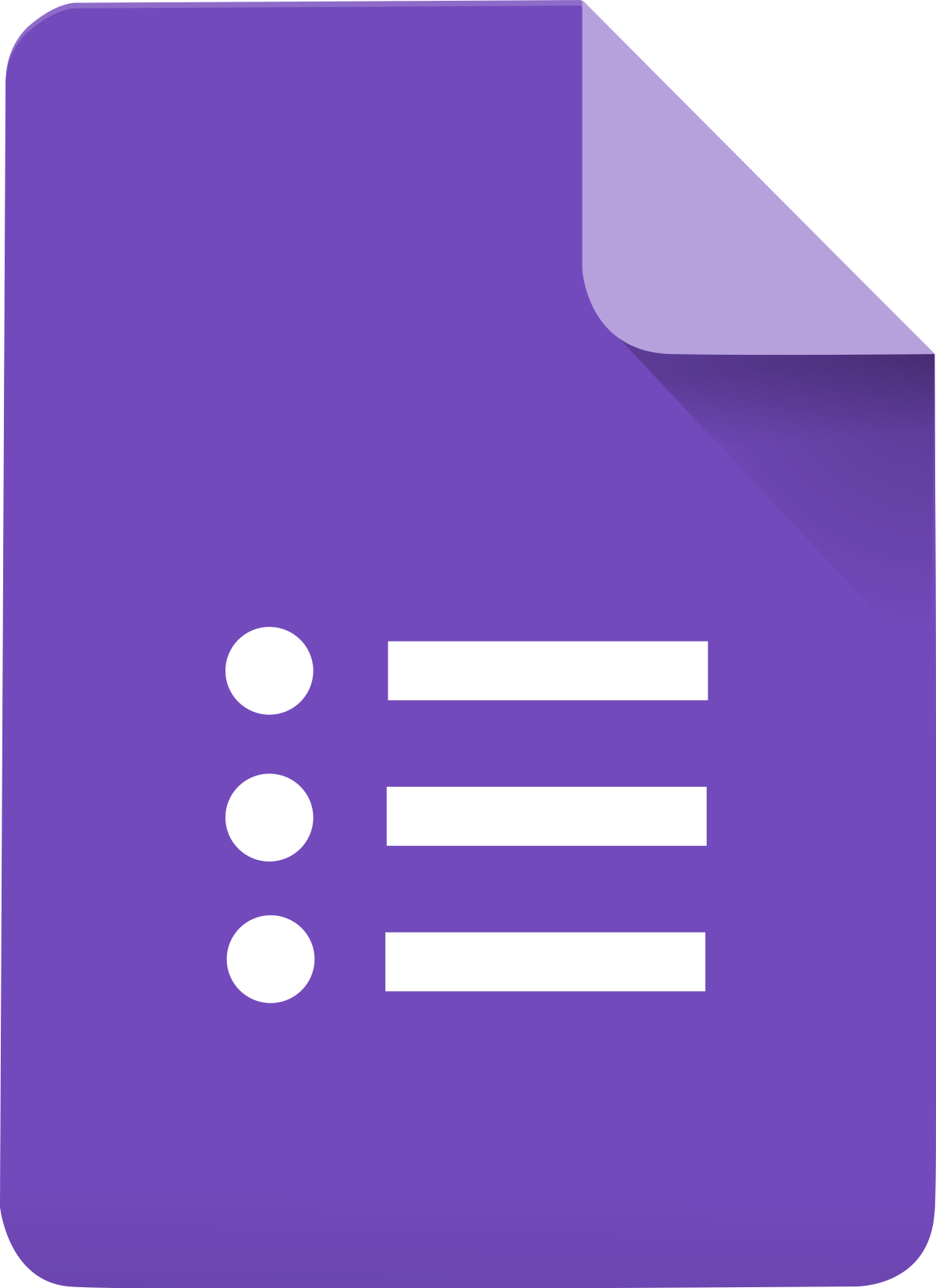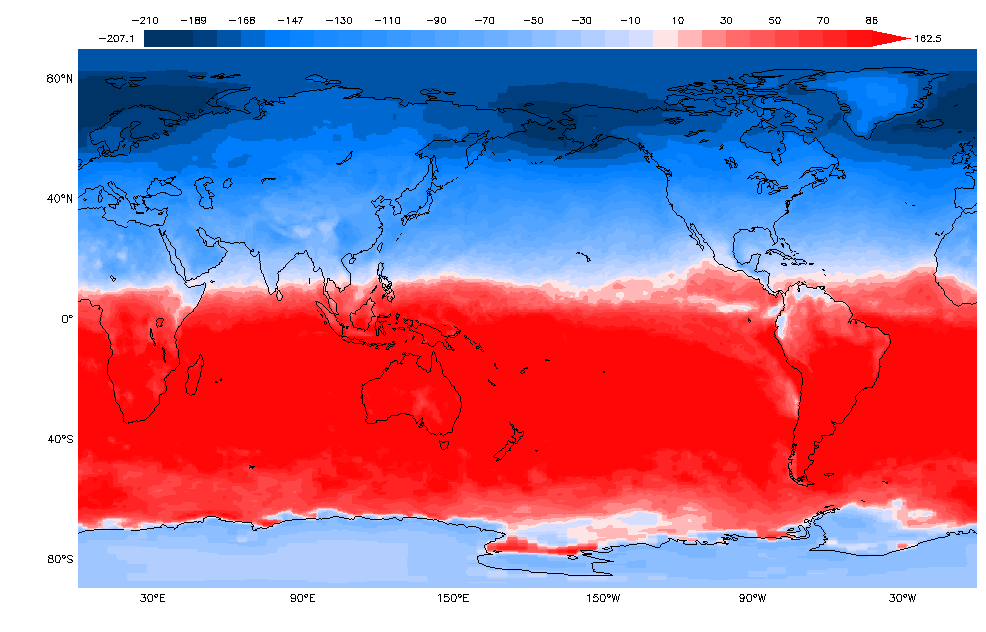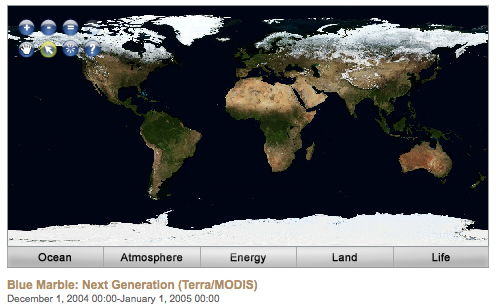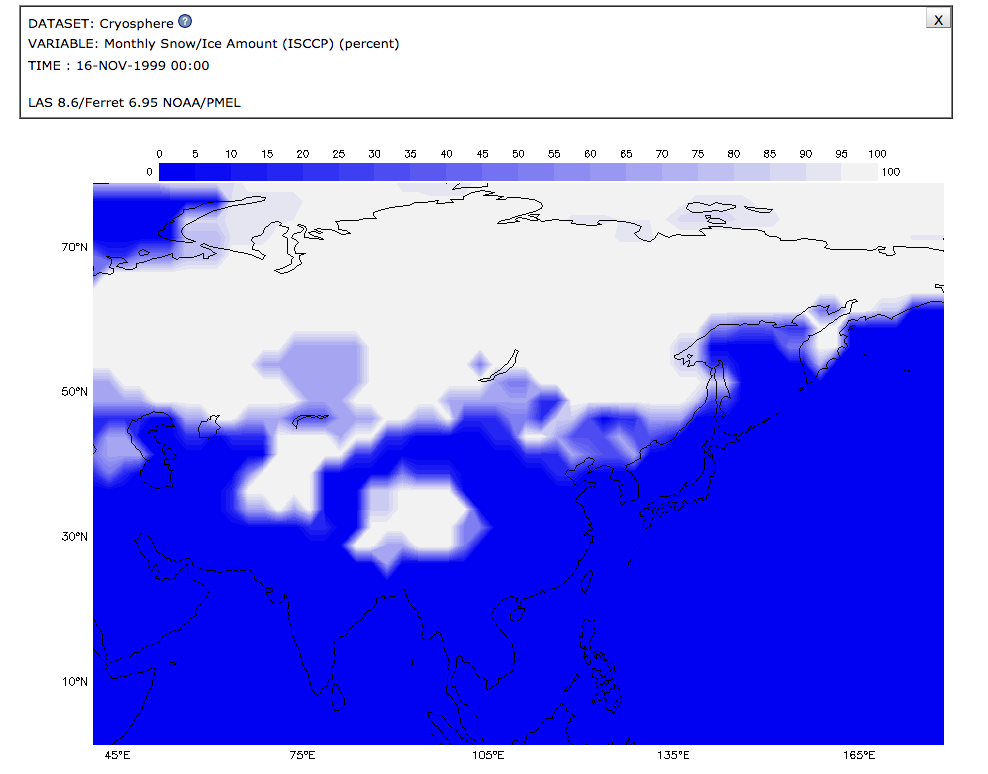Students will analyze surface temperature and solar radiation data to construct explanations about the relationship of seasons and temperature to the amount of solar energy received on Earth’s surface.

loading Earth as a System...
Featured Lesson Plans
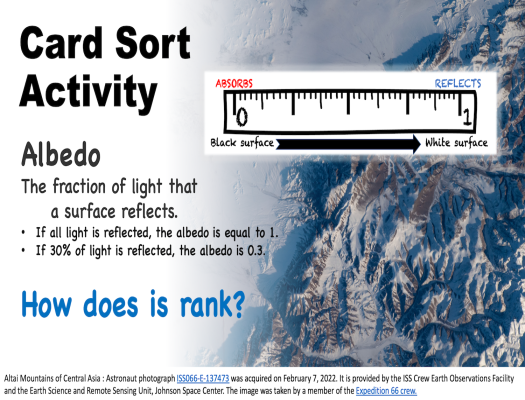
Astronaut Pictures: Claim, Evidence & Reasoning
Students use albedo values of common surfaces along with photographic images of Earth taken from the International Space Station to make an argument about specific anthropogenic activities that impact Earth’s albedo.
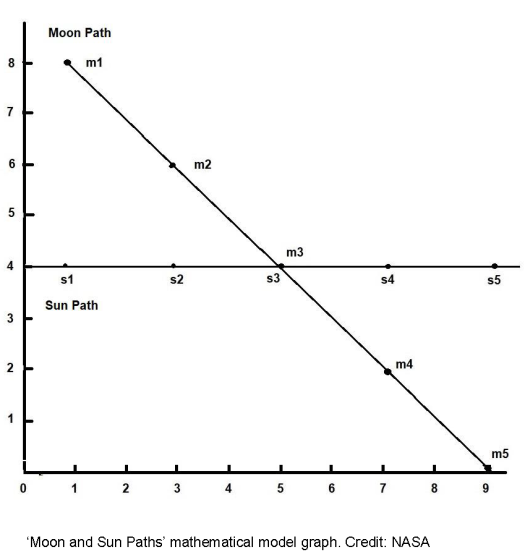
Modeling Solar Eclipse Geometry
In this activity, students will model the geometry of solar eclipses by plotting a few points on a piece of graph paper, and using quarters and a nickel to represent the Sun and Moon (not to scale).
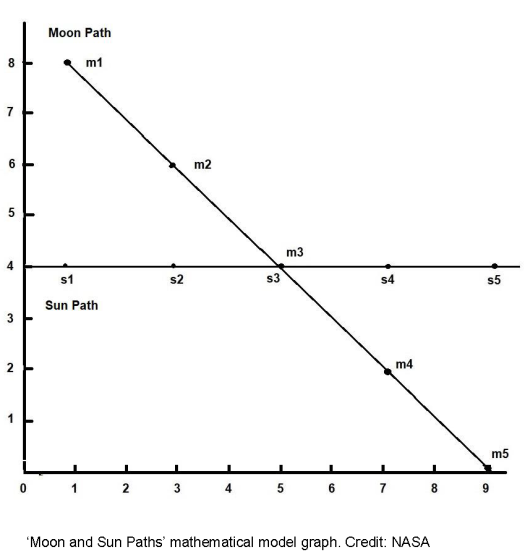
Modeling Sun-Moon Positions for Solar Eclipses
In this activity, students will model the geometry of solar eclipses using quarters to represent the Sun and Moon (not to scale).
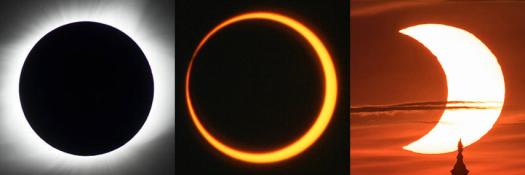
What are the Different Types of Solar Eclipses?
In this lesson students will calculate the size to distance ratio of the Sun and the Moon from Earth to determine how a solar eclipse can occur.
What Do Scientists Learn About the Universe from Observing Solar Eclipses?
In this activity, students will compare the methods scientists use to study the Sun, including drawings made during a total solar eclipse in the 1860’s, modern coronagraphs, and advanced imagery gathered by NASA’s Solar Dynamics Observatory.
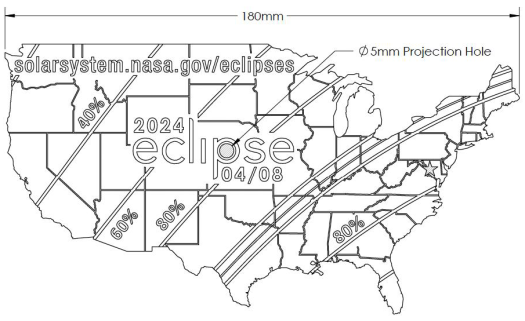
How to Safely Observe a Solar Eclipse
In this activity students will learn several ways to safely observe a solar eclipse.
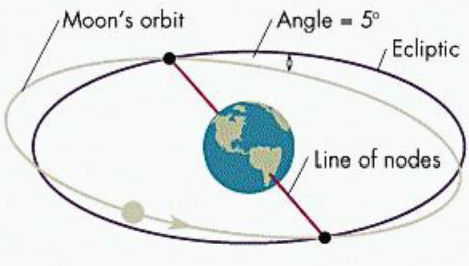
Why Don't We Have Solar Eclipses Every Month?
In this activity, students will analyze past and future eclipse data and orbital models to determine why we don’t experience eclipses every month.
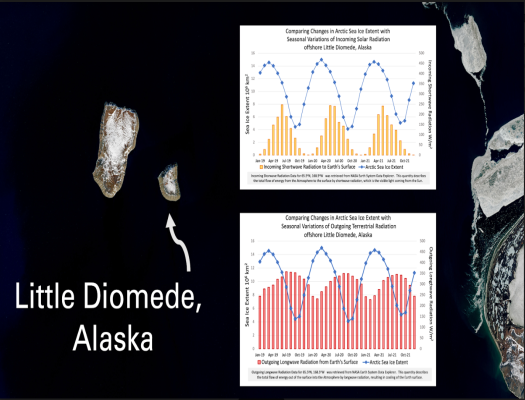
Arctic Sea Ice Changes and Earth's Energy Budget
Students consider the impact of changing conditions on the remote island of Little Diomede, Alaska after they investigate the relationship between seasonal trends in sea ice extent with shortwave and longwave radiation flux described in Earth’s energy budget.
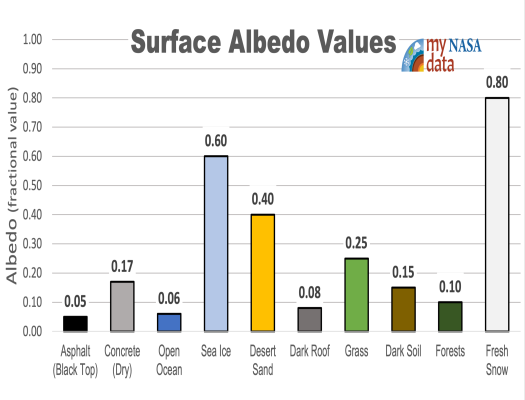
Albedo Card Sort
This lesson contains a card sort activity that challenges students to predict relative albedo values of common surfaces.
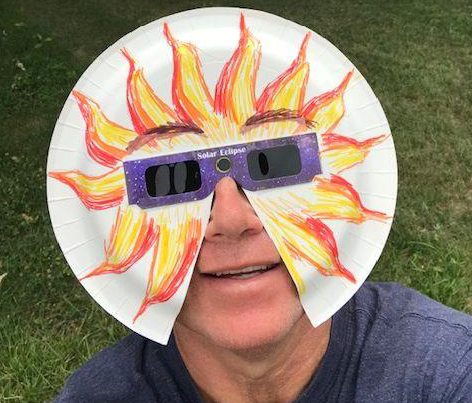
Solar Eclipse Safety Activity
This hands-on activity is the construction of an extended coverage area of eclipse glasses to provide extra protection for safely viewing a solar eclipse. This makes it harder to look outside the lenses on the eclipse glasses.
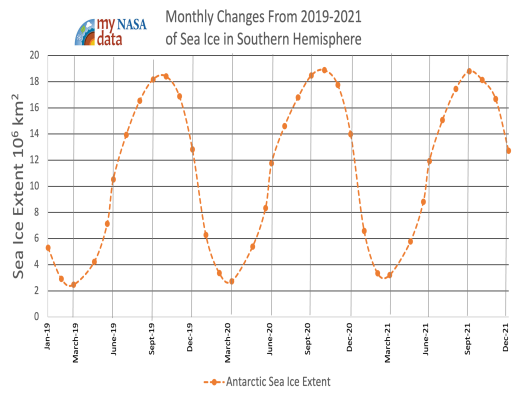
Investigating Sea Ice Extent in the Arctic and Antarctic
Guided by the 5E model, this lesson allows students to work together to uncover how changes in sea ice extent in the Arctic and Antarctic regions are connected to Earth’s energy budget.
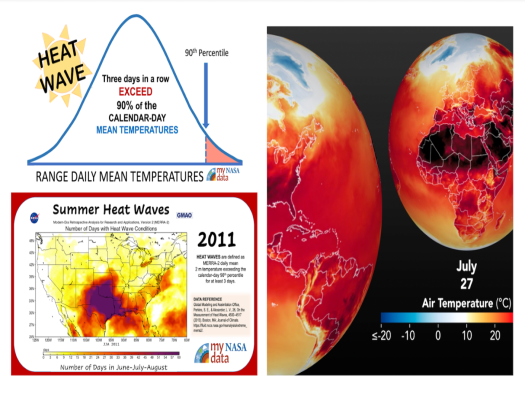
Summer of Heatwaves
The extreme temperatures during July 2022 prompt students to investigate a model that displays historical heat wave frequency data to discover the importance of defining terms when interpreting data.
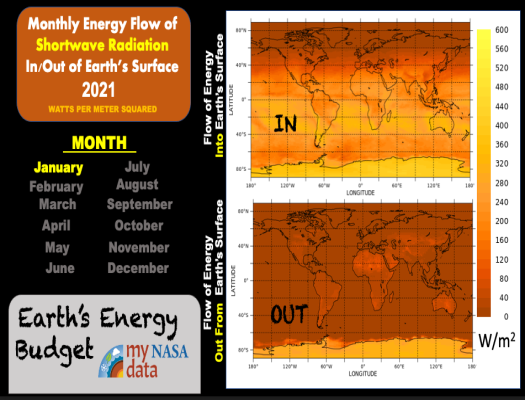
Ins and Outs of Shortwave Radiation
Students construct explanations about Earth’s energy budget by connecting a model with observations from side-by-side animations of the monthly mapped data showing incoming and outgoing shortwave radiation from Earth’s surface.
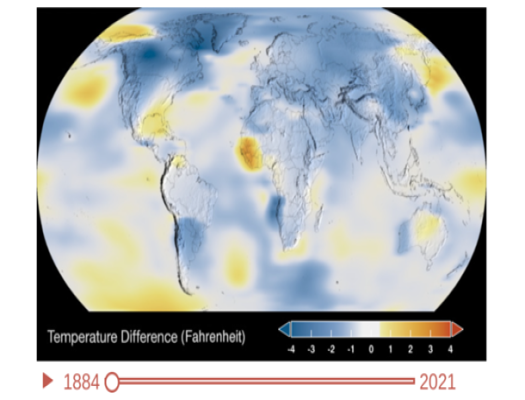
Greenhouse Gases: Importance & Human Impact
Students will watch and examine a NASA animation of Earth’s rising surface temperatures over an almost 150 year period.
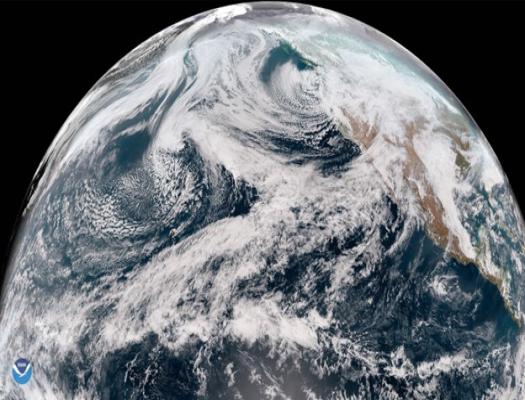
Satellites at Work
Students visit a NASA Website called "Eyes on the Earth" to view satellite missions in 3D circling the Earth and learn to navigate to specific satellites to learn about their capability of analyzing our changing planet and air quality.
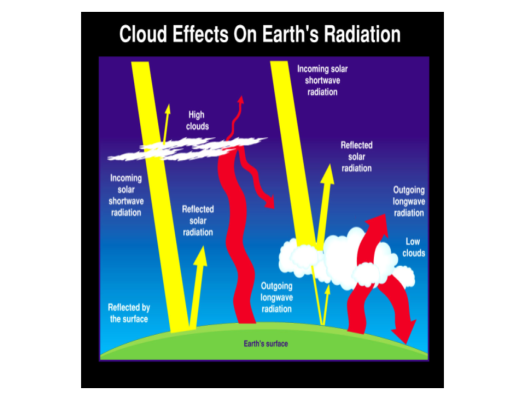
Clouds & Their Impact on Global Warming
Students will investigate the role of clouds and their contribution (if any) to global warming. Working in cooperative groups, students will make a claim about the future role clouds will play in Earth’s Energy Budget if temperatures continue to increase.

Energy Transfer in Earth's Atmosphere
Students will examine how radiation, conduction, and convection work together as a part of Earth’s Energy Budget to heat the atmosphere.

Nitrogen Dioxide and Precipitation
Students will explore the relationship between Nitrogen Dioxide and Precipitation in Earth's atmosphere. They will explore the data provided, make a claim, and complete a slide guided by a rubric.

How are Phytoplankton and Sea Surface Temperatures Related?
Students analyze and compare satellite data of Ocean Chlorophyll Concentrations with Sea Surface Temperatures, beginning with the North Atlantic region, while answering questions about the global patterns of these phenomenon.
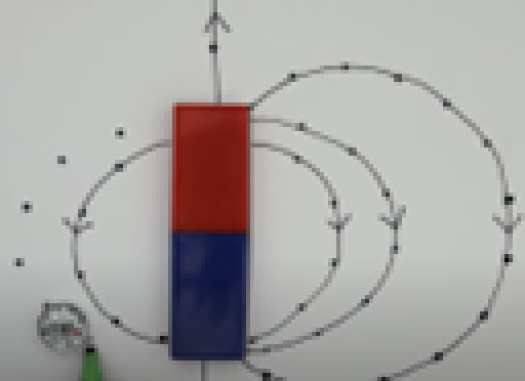
Modeling Magnetic Fields
In this activity, learners investigate the properties of magnetism by using a compass to trace the magnetic field lines of a bar magnet.
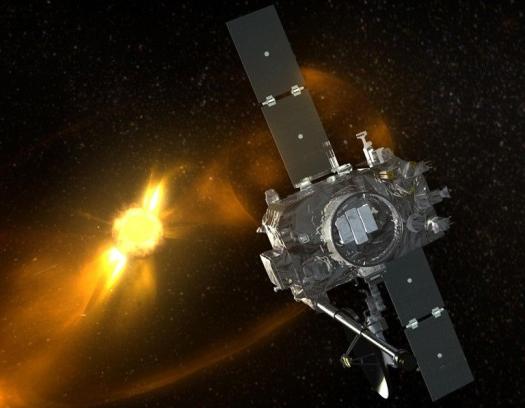
Coronagraph Flipbook
In this activity, learners will explore an additional tool used to observe the Sun’s atmosphere, called a coronagraph. Learners will create a flipbook of a coronagraph showing a coronal mass ejection.
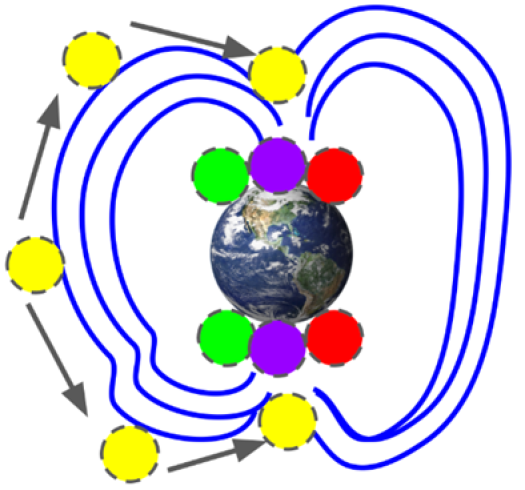
Space Weather Forecast with Rainbow Bite-Sized Candies
Using a “fun-size” bag of rainbow bite-sized candies learners will place different colored candies on a diagram of the Sun-Earth system to show different space weather conditions during solar minimum and solar maximum.
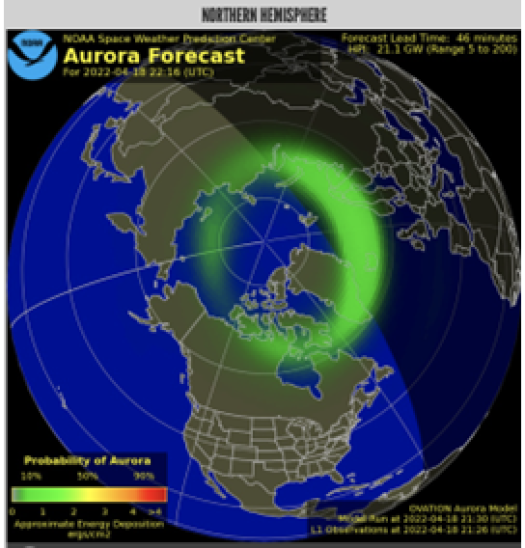
Predicting Aurora
In this activity, learners predict the likelihood of aurora on Earth by examining the Kp-index and using NOAA’s 30-minute aurora forecast.
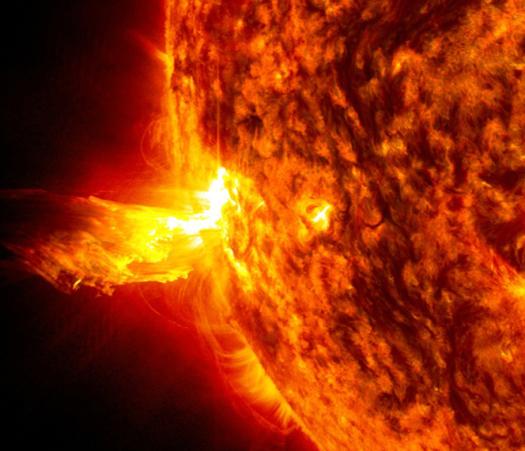
Predicting Space Weather
Learners will analyze space-weather data from the National Oceanic and Atmospheric Administration (NOAA). Learners will compare two different types of data: sunspot data and measurements from magnetometers on Earth.
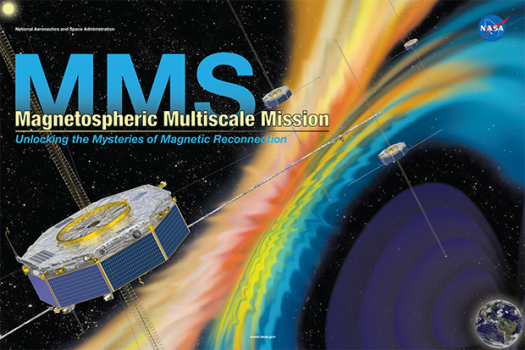
Magnetospheric Multiscale (MMS) Spacecraft Model
Learners will build a 2D model of the Magnetospheric Multiscale (MMS) Spacecraft model.
Analyzing Data for My Location
The Earth System Data Explorer provides mapped data for a variety of variables. Select a variable, produce a map and use the Data Literacy Cubes from My NASA Data to analyze the map.
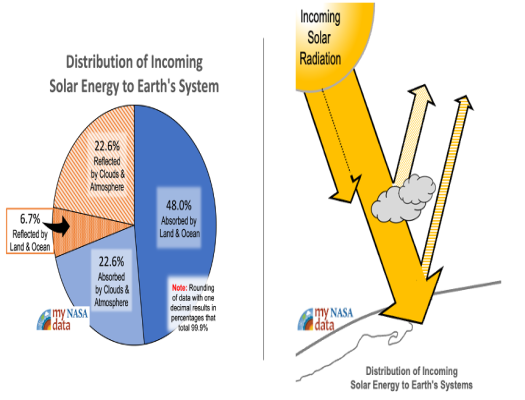
Modeling Incoming Solar Radiation
A kinesthetic activity that challenges students to participate in a model that describes the fate of solar energy as it enters the Earth system. A good initial lesson for Earth’s energy budget, students unravel the benefits and limitations of their model.

Solar Eclipse Implementation Sequence
The Solar Eclipse Implementation Sequence provides a series of lesson plans for students to learn about solar eclipses.
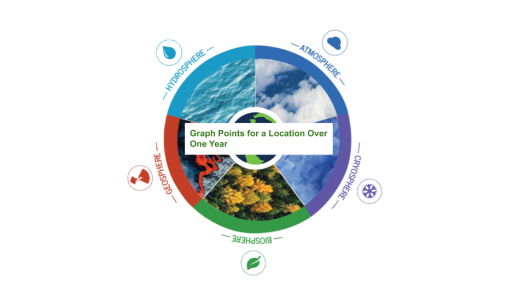
Earth System Satellite Images - Graph Points for a Location Over One Year
The Earth System Satellite Images available on My NASA Data provide teachers and students opportunities to explore data and identify relationships between/among different components of the Earth system.
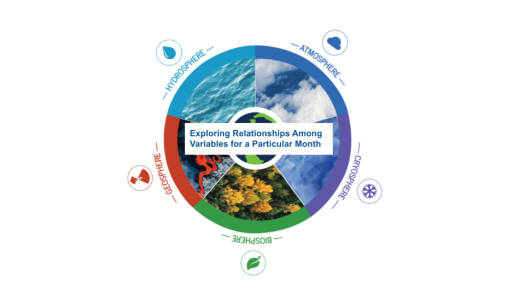
Earth System Satellite Images - Exploring Relationships Among Variables for a Particular Month
The Earth System Satellite Images available on My NASA Data provide teachers and students opportunities to explore data and identify relationships between/among different components of the Earth system.
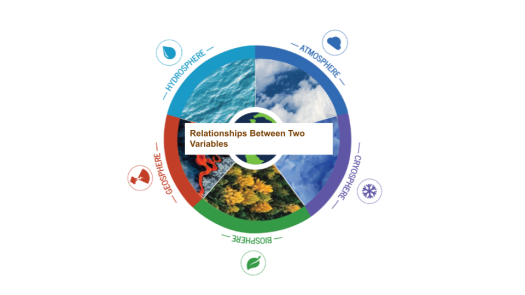
Earth System Satellite Images - Relationships Between Two Variables
The Earth System Satellite Images available on My NASA Data provide teachers and students opportunities to explore data and identify relationships between/among different components of the Earth system.
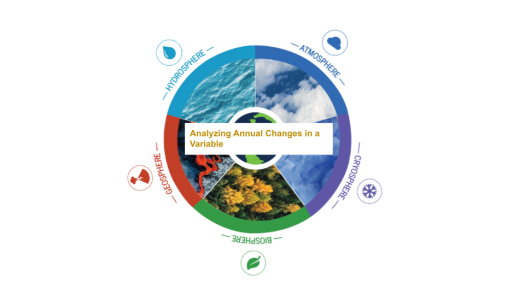
Earth System Satellite Images - Analyzing Annual Changes in a Variable
The Earth System Satellite Images available on My NASA Data provide teachers and students opportunities to explore data and identify relationships between/among different components of the Earth system.
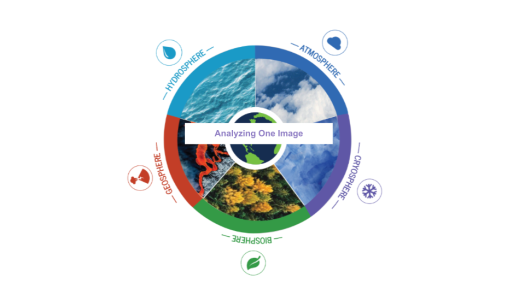
Earth System Satellite Images - Analyzing One Image
The Earth System Satellite Images available on My NASA Data provide teachers and students opportunities to explore data and identify relationships between/among different components of the Earth system.

Earth System Satellite Images - Analyzing All Variables
The Earth System Satellite Images available on My NASA Data provide teachers and students opportunities to explore data and identify relationships between/among different components of the Earth system.
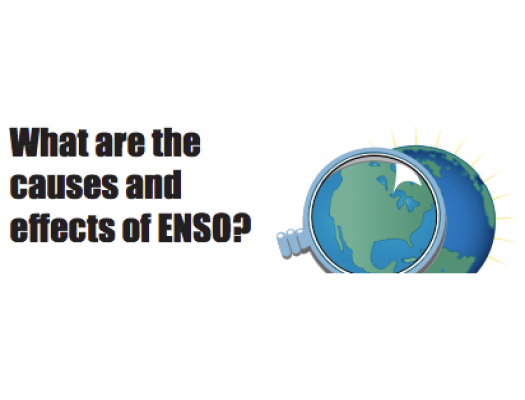
What are the causes and effects of ENSO?
(NOTE: This archived content may contain outdated information or references that may not reflect current policy or programs.)
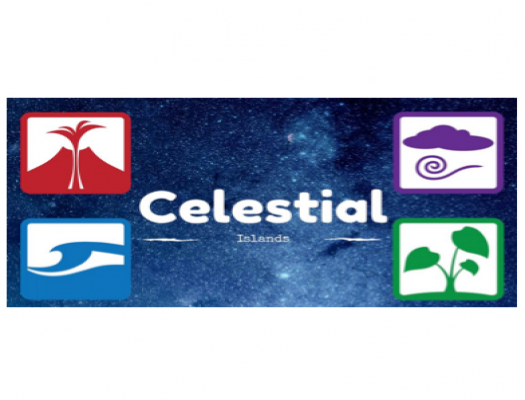
Our Earth: A Web of Systems
Through guided inquiry, students will identify interactions of the four major scientific spheres on Earth: biosphere, atmosphere, hydrosphere and geosphere. They will then identify how these systems are represented and interact in their classroom aquarium.

GLOBE Local Connections: Earth Systems in the Local Study Site
To help students articulate and integrate their existing knowledge about the air, water, soil, and living things by viewing them as interacting parts of a system

GLOBE Regional Connections: Earth Systems at a Regional Level, Defining Regional Boundaries
Students discuss their current understanding of what Earth systems are and how they work and consider how to identify the boundaries of a region for Earth system study.

SPHERES OF EARTH: An Introduction to Making Observations of Earth Using an Earth System Science Approach
This activity introduces students to aspects of the atmosphere, biosphere, hydrosphere, and litho/geosphere and how they are interrelated. It is designed to promote an interest in authentic investigations of Earth using images acquired by astronauts as the hook.

GLOBE Earth System Poster Activity Guide
The processes comprising the Earth’s environment are interconnected. Understanding how these connections operate on a global scale is to understand the Earth as a system.
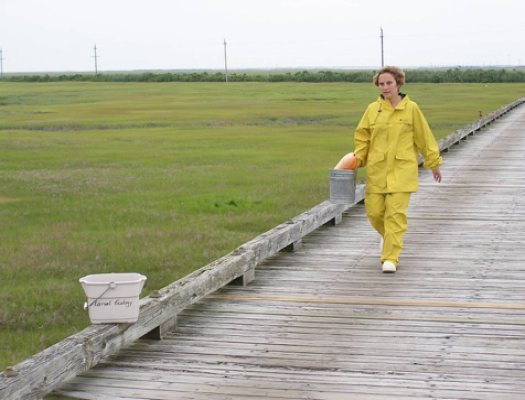
Introduction: Building Claims from Evidence
Students will practice the process of making claims, collecting evidence to support claims, and applying scientific reasoning to connect evidence to claims.

Inferring Relationships Among Sea Surface Salinity & Other Variables in the North Atlantic
Students will observe monthly satellite data of the North Atlantic to identify relationships among key science variables that include sea surface salinity (SS), air temperature at the ocean surface (AT), sea surface temperature (ST), evaporation (EV), precipitation (PT), and evaporation minus pre
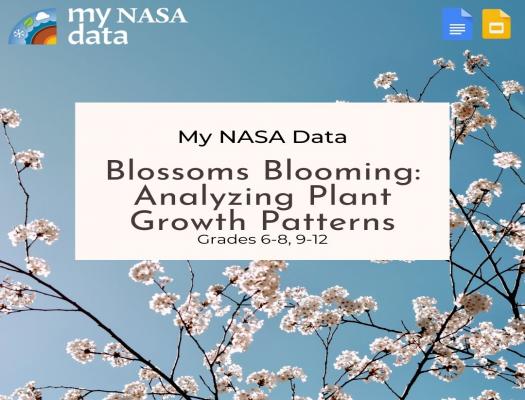
Blossoms Blooming: Analyzing Plant Growth Patterns
Students analyze historic plant growth data (i.e., Peak Bloom dates) of Washington, D.C.’s famous cherry blossom trees, as well as atmospheric near surface temperatures as evidence for explaining the phenomena of earlier Peak Blooms in our nation’s capital.
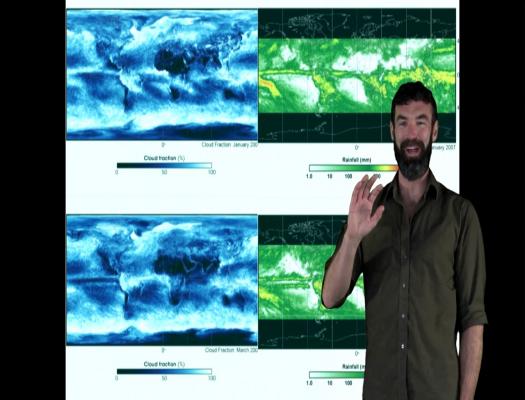
Instructional Videos for GLOBE Earth System Poster: Lesson Plan
The Earth System Poster activity walks learners through global patterns and illuminates how each of the spheres is interconnected across the world. We will divide into small groups to look at maps of different parts of the earth system that have been observed by NASA satellites.
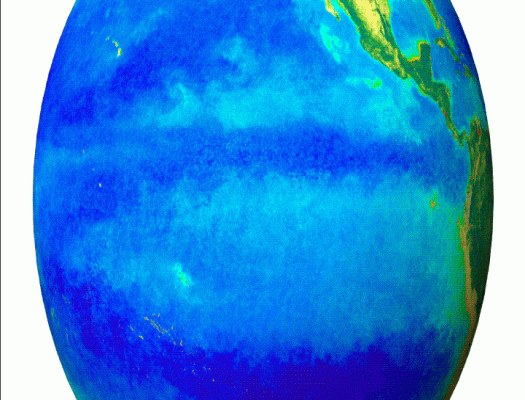
Ocean Impacts of an El Niño Event
Students will examine a 2014-2015 El Niño Southern Oscillation (ENSO) event to identify relationships among sea surface height, sea surface temperature, precipitation, and wind vectors.
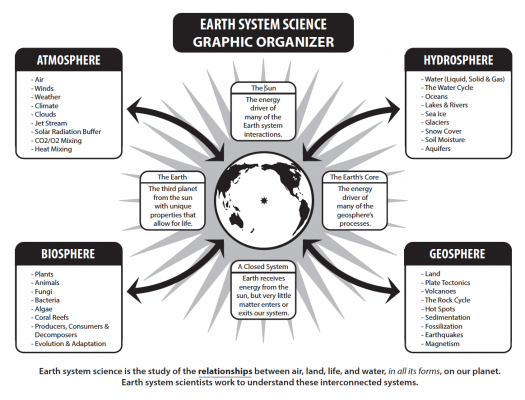
What Is Earth System Science?
This lesson introduces the Earth system science spheres through model making and discussion. Students will work within an Earth system science notebook to chronicle their work and learning.
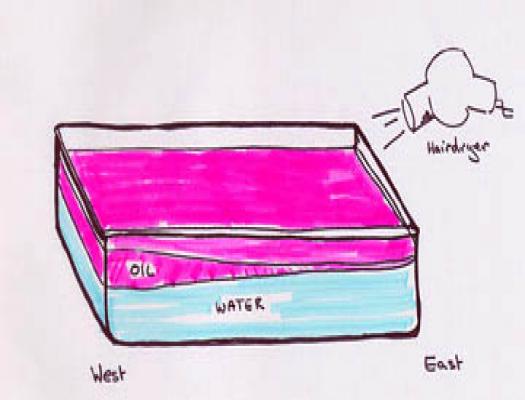
Make Your Own El Niño in the Classroom
Check out this hands-on demonstration of the El Niño Effect, trade winds, and upwelling provided by NASA's Jet Propulsion Lab
Credit: JPL's Sea Level Program
Tracking Change Over Time-Understanding Remote Sensing
This USGS activity leads students to an understanding of what remote sensing means and how researchers use it to study changes to the Earth’s surface, such as deforestation.
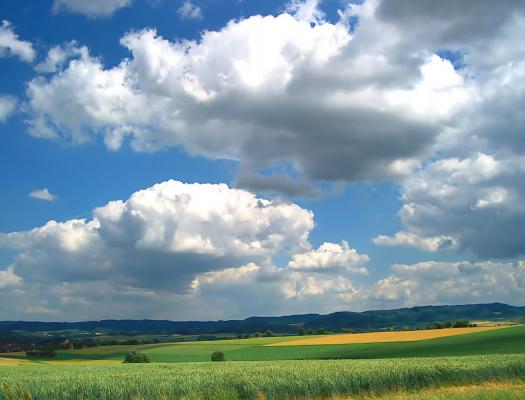
Cloudy vs. Clear - Maps
Students will analyze and interpret maps of the average net atmospheric radiation to compare the flow of energy from the Sun toward Earth in different months and for cloudy versus clear days. Students will draw conclusions and support them with evidence.
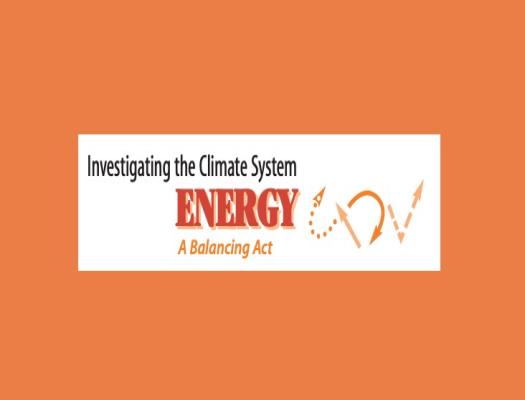
Energy Absorption on the School Yard (Lab Activity)
Students collect and analyze temperature data to explore what governs how much energy is reflected. This lab activity is designed to demonstrate that the albedo of a land surface can have a measurable impact on the surface temperature.

Heating Things Up
Working in small groups, students will explore the energy transfer of different earth materials when they are heated up and cooled down.
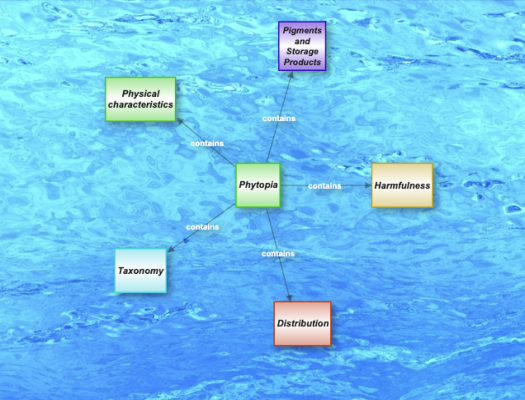
Phytopia: Exploration of Marine Ecosystem
Students use Phytopia: Exploration of the Marine Ecosystem, a computer-based tool, to investigate various phytoplankton species and topics relating to phytoplankton biology. Phytopia features a concept
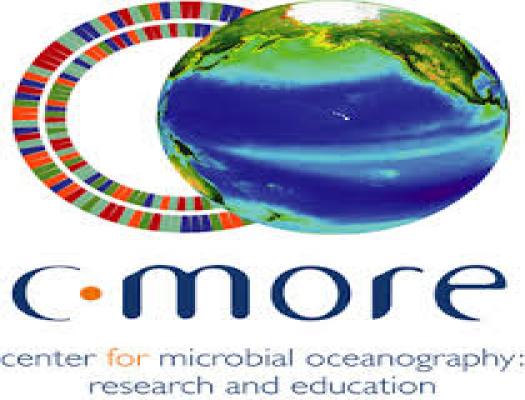
Introduction to Phytoplankton
In this lesson, students investigate and identify various phytoplankton using images that were previously taken with a compound microscope. Credit: National Science Foundation-sponsored Center for Microbial Oceanography: Research and Education (C-MORE)
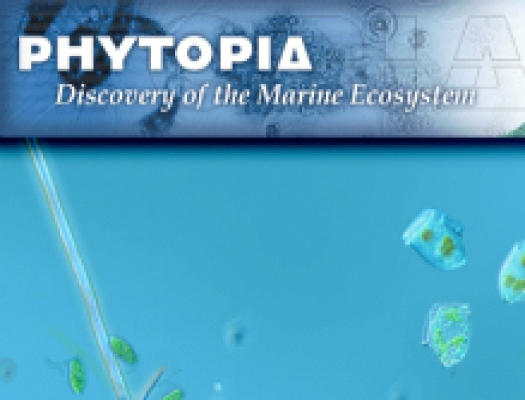
Phytopia's "Light & Color"
This lesson is taken from NASA's Phytopia: Discovery of the Marine Ecosystem written in partnership with Bigelow Laboratory for Ocean Science with funding from the National Science Foundation.

What Color is the Ocean? A STEM Spectrophotometer Activity
In this activity, you will use an inexpensive spectrophotometer* to test how light at different visible wavelengths (blue, green, red) is transmitted, or absorbed, through four different colored water samples.
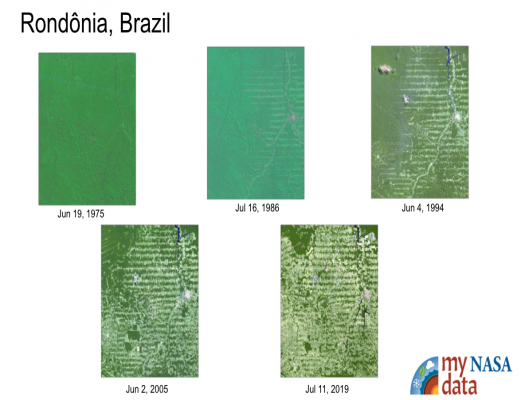
Investigating Deforestation Through An Earth Systems View Using Landsat
The purpose of this activity is to have students use an Earth Systems perspective to identify the various causes associated with changes to Earth's forests as they review Landsat imagery of site locations from around the world.

When Land Ice Melts
This activity invites students to model and observe the effect of melting ice sheets (from land) on sea level and the difference between the effect of melting sea-ice to that of melting land ice on sea level.
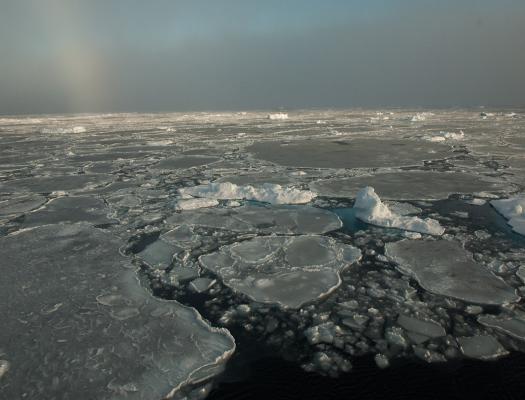
When Floating Ice Melts
This activity invites students to simulate and observe the different effects on sea level from melting sea-ice.
Credit: Modified from POLAR-PALOOZA (National Science Foundation under Grant No. 0632262) and the Office of Science, Department of Energy.
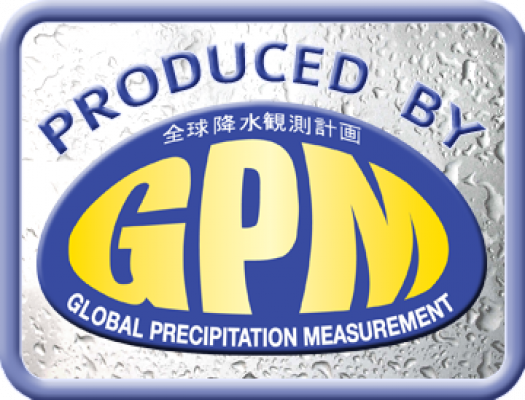
Climate Change Inquiry Lab
In this lesson, students will investigate the drivers of climate change, including adding carbon dioxide and other greenhouse gases to the atmosphere, sea level rise, and the effect of decreasing sea ice on temperatures.
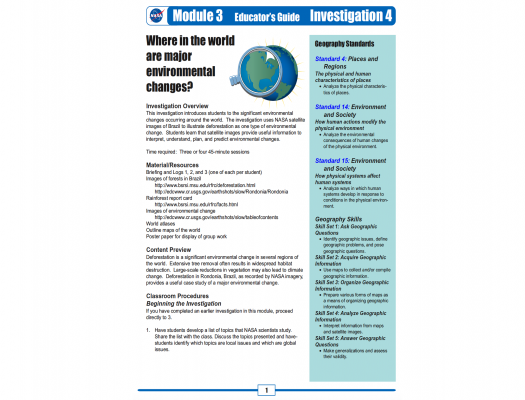
Where in the world are major environmental changes?
This investigation introduces students to the significant environmental changes occurring around the world. The investigation uses NASA satellite images of Brazil to illustrate deforestation as one type of environmental change.

Seasonal Science: Building Claims from Evidence
Students will analyze surface temperature and solar radiation data to construct explanations about the relationship of seasons and temperature to the amount of solar energy received on Earth’s surface.
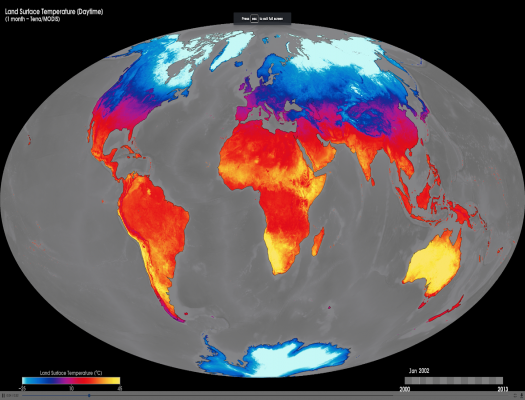
Comparing Temperature & Solar Radiation for Common Latitudes
Examine (daytime) surface temperature and solar radiation received at locations found near similar latitudes using NASA Data.
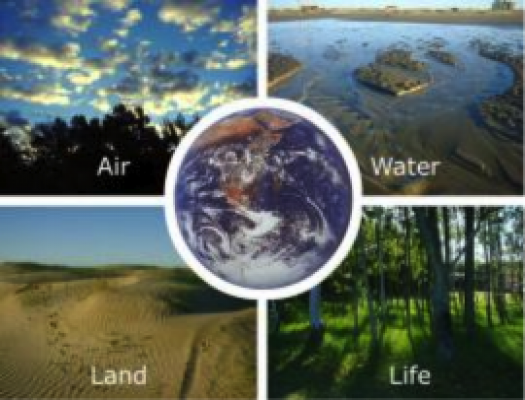
Connect the Spheres: Earth Systems
This activity was developed by NASA's Global Precipitation Measurement (GPM) team as an introductory experience to a series of lessons about water resources on Earth.
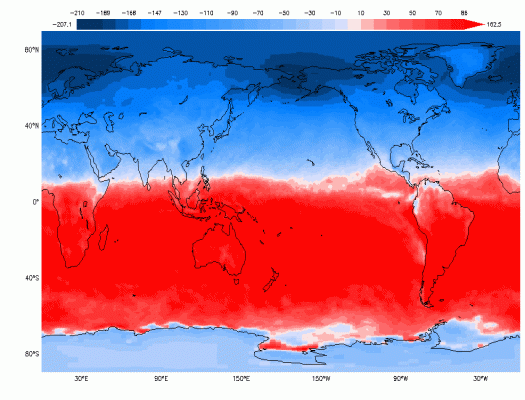
Earth’s Energy Budget-Seasonal Cycles
Students move through a series of short activities to explore and evaluate global solar radiation data from NASA satellites. In this process, students make qualitative and quantitative observations about seasonal variations in net energy input to the Earth System.
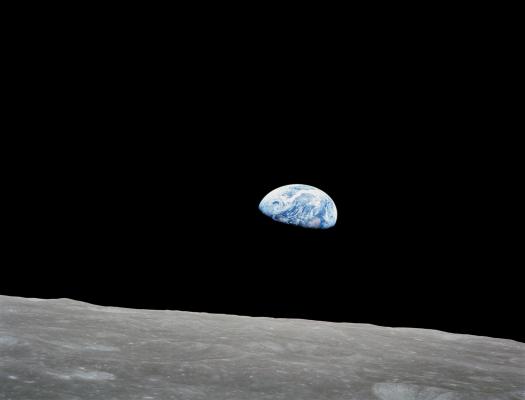
An Earth System View of Earthrise
Students are introduced to the Earthrise phenomenon by seeing the Earth as the Apollo 8 astronauts viewed our home planet for the first time from the Moon. They will analyze a time series of mapped plots of Earth science variables that NASA monitors to better understand
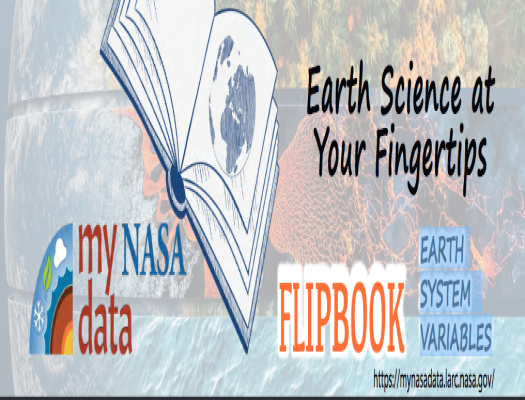

Air, Water, Land, & Life: A Global Perspective
In Part A of this lab, students will examine a variety of images and maps of the whole Earth in order to identify the major components of the Earth system at a global scale.
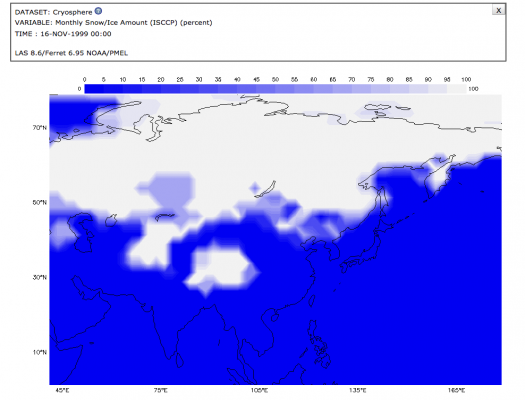
Observing Earth’s Seasonal Changes
In this lesson, Observing Earth’s Seasonal Changes, students observe patterns of average snow and ice amounts as they change from one month to another, as well as connect the concepts of the tilt and orbit of the Earth (causing the changing of seasons) with monthly snow/ice data from January 2008
Examine (daytime) surface temperature and solar radiation received at locations found near similar latitudes using NASA Data.
This activity was developed by NASA's Global Precipitation Measurement (GPM) team as an introductory experience to a series of lessons about water resources on Earth.
Students move through a series of short activities to explore and evaluate global solar radiation data from NASA satellites. In this process, students make qualitative and quantitative observations about seasonal variations in net energy input to the Earth System.
Students are introduced to the Earthrise phenomenon by seeing the Earth as the Apollo 8 astronauts viewed our home planet for the first time from the Moon. They will analyze a time series of mapped plots of Earth science variables that NASA monitors to better understand the Earth
NASA visualizers take data – numbers, codes – and turn them into animations people can see and quickly understand.
Air, Water, Land, & Life: A Global Perspective
In this lesson, Observing Earth’s Seasonal Changes, students observe patterns of average snow and ice amounts as they change from one month to another, as well as connect the concepts of the tilt and orbit of the Earth (causing the changing of seasons) with monthly snow/ice data from January 2008

